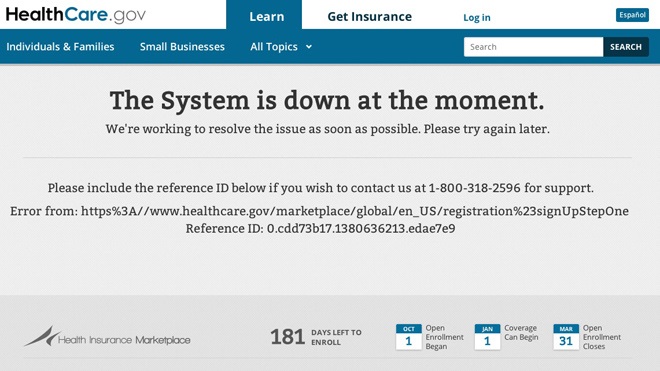As much as we love technology, sometimes it can be our worst enemy. President Obama is finding this out the hard way as HealthCare.gov, the website where millions of Americans were expected to be able to sign up for health care, became a debacle from the start.
Problems with the website have ranged from log-in issues to slow page loading and page errors. Participants were also encouraged to call a help number if they were having trouble with the site, a procedure that typically led them back to HealthCare.gov and little in the way of resolution.
For the president and his administration, this was an embarrassing credibility issue. But for those in the PR industry and PR students everywhere, it’s an opportunity to learn a valuable lesson. The situation is a case study in crisis communications. While we can debate all day long about what led to the implementation failure, how things were communicated in the days after the problems became public can either spell trouble or help build support. In this case, it brought more trouble.
The first step in any crisis is to assess the situation. Understanding all the problems, the causes, what is being done to rectify the situation and other key factors are a must. You can’t communicate what you do not know. And you can’t communicate until you know exactly what you are dealing with. Otherwise, you risk miscommunicating. This occurred on multiple occasions in the aftermath of the botched launch. Here are a few ways to manage the message and turn the crisis into an opportunity:
- Assess the situation, risks and desired outcomes
- Prioritize stakeholders
- Identify your messengers and leverage communications ambassadors to help communicate with stakeholders
- Develop overarching messaging and sub-messages that address the “what’s in it for me” question for all those affected
- Make your case on why things will be better in the long run and when people can expect it to get better, supporting your case with facts and details
- Be truthful and forthright in your communications, as it will go a long way toward building trust and enhancing credibility
- Know that what you are communicating should paint the full reality of the situation, rather than what you think people want to hear
- Communicate with regularity, clarity and consistency
Once the messages are communicated, it is important to maintain proactive communications. Monitoring responses and managing expectations is critical to an ultimately positive outcome. Take note, PR strategists of the world, because it doesn’t get any more textbook than this.

